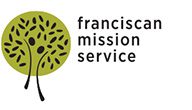No Country For Young Girls

Editor’s Note: Missioner Maeve Gallagher reflects on how she’s seen Guatemala’s beauty standards manifested in her students and felt compelled to use this as a teaching experience.
As I reapplied my lipstick under the florescent bathroom lights, Ceci and Katy commented on my appearance, “Who’s the boy?”
“Is it the cute guy who was at mass this morning?” they teased.
“No. It’s not for anyone,” my reflection replied. “I like how it looks. It’s for me.”
This struck them as odd. If I wasn’t wearing makeup to impress someone, why was I wearing it?
Life for women living in Guatemala’s machismo culture is hard. The day a girl is born she is immediately at a disadvantage because of her sex. But Guatemalan women are strong; they hustle hard while caring for their families. They’ve endured civil war, government corruption, gang violence, and, to paraphrase Maya Angelou, still they rise.
Women all over the world are influenced by their culture’s view of beauty. Here in Guatemala, advertisements of thin, light-skinned, straight-haired beauties in bikinis plaster the bus stations, billboards, and magazines. These models represent a very small portion of Guatemalan women.
In a country with a large indigenous population, the women in popular culture don’t represent the majority of women here.
My students cover their arms with long sleeves and throw the hoods of their sweatshirts over their heads so they don’t get tans. My pale arms are shoved against their morena ones as they show their friends how dark or light they are in comparison to my Irish/possibly vampire pallor. They talk about how they want to marry a light-skinned man so that their children will “be more beautiful.” They openly envy those whose hair is a shade lighter than their own deep, shiny, black.
When I taught a unit on physical descriptors, I brought to class pictures of a diverse range of famous women so they could describe them using their newly learned vocabulary. I included many Black, Asian, and Latina singers and actresses thinking that they would be excited to see women who diverged from the usual models they saw.
In keeping with the theme my life has taken on mission, the lesson did not go according to plan. When presented with Solange’s bouncy afro, most students giggled and a few outright said that her hair was ugly. But when the (white) Disney Channel star I chose to illustrate the words “straight hair” was shown, her professionally straightened, waist length extensions weren’t the only thing the girls commented on; her pale skin, her light eyes, and her slender body were all called beautiful.
So then what? Did the young, white, foreign teacher suddenly dismantle hundreds of years of body shaming and prejudices stemming from colonization with an inspiring monologue? Maybe if my life was a movie starring Sandra Bullock, but for better or worse, it’s a lot messier and more complex than that.
Instead, I told them it wasn’t nice to call someone ugly and continued on with the lesson. It felt like a hollow gesture but I wasn’t prepared to handle a discussion about such a deeply felt subject.
In the subsequent days I asked some of my students why they had made those comments in class. Their answers ranged from racism to societal standards to “just because,” but the phrase most often repeated was, “I don’t know.”
As I’ve said before in previous blog posts, I’m not here to solve problems, nor do I have the capability to do so. I’m here to accompany. My students are the future advertising executives, activists, models, and teachers of Guatemala who can change the beauty standards of Guatemala.
I’m proud to know them and to be a part of their educational experiences both during and outside of our classes
Reflection Question: How are you being called to accompany others?
Tagged in:



